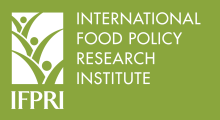Achieving urban food and nutrition security in the developing world
Resource information
Date of publication
December 2000
Resource Language
ISBN / Resource ID
IFPRI-p15738coll2-92784
Pages
1 folder, 10 briefs : ill., table 30 cm.
The trend is inescapable: more and more people in the developing world are living in the cities. By 2020, the number of people living in developing countries will grow from 4.9 billion to 6.8 billion. Ninety percent of this increase will be in rapidly expanding cities and towns. More than half the population of Africa and Asia will live in urban areas by 2020. More than three-quarters of Latin Americans already do.
Publisher(s)
Data Provider


